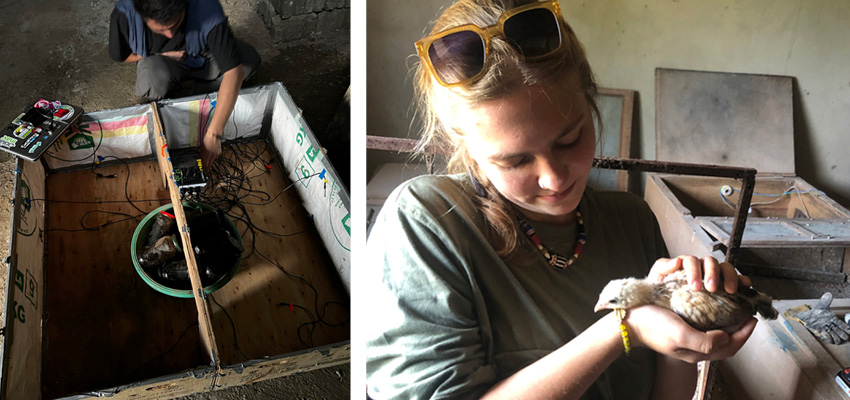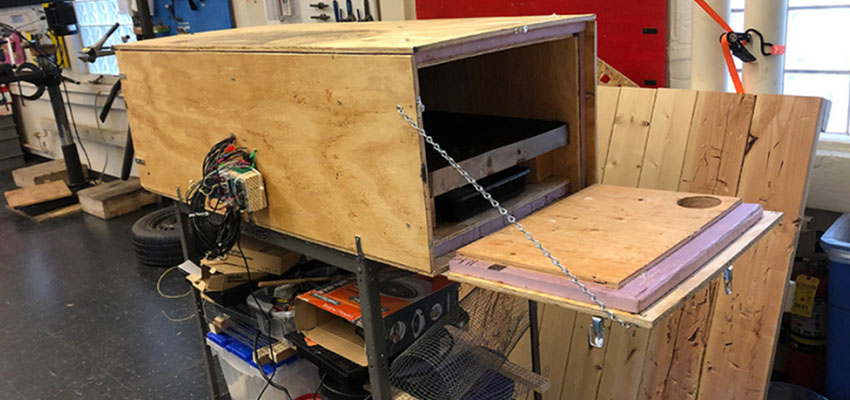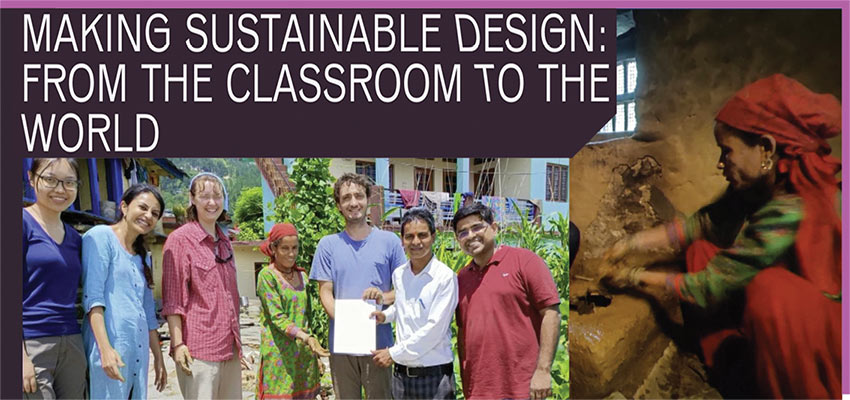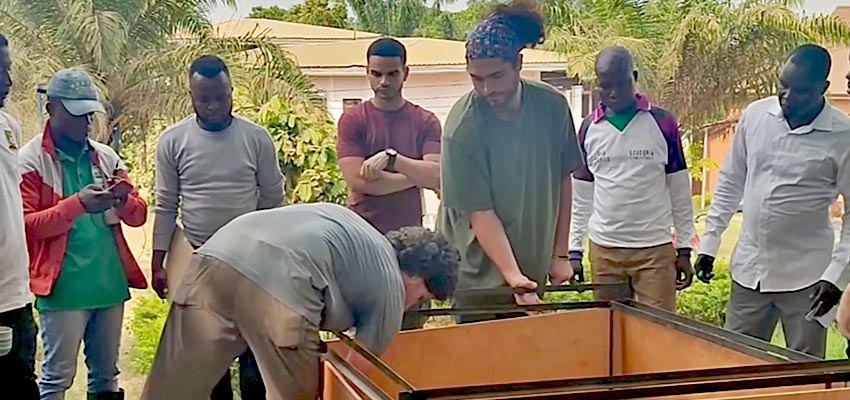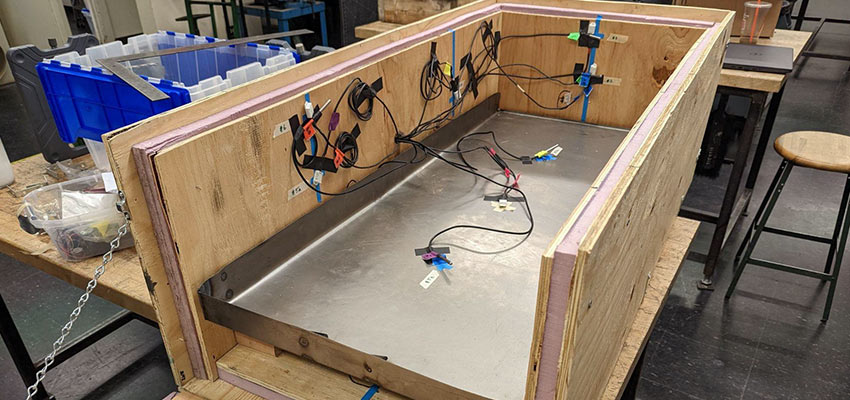
Problem framing
A group in D-Lab was able to design an insulated box heated by tetradecanol, a phase changing salt. The box created a temperature gradient along the inside for chicks to adjust to their desired level of heating. However, due to lack of time at the end of the semester, some concerns could not be fully addressed, the PCMs selected did not get hot enough to stay within the desired temperature overnight. Additionally, the containers for heating up and holding the PCM’s while they were hot were degraded by the crystallization of the salt. Finally, the brooding box designed did not yet have ventilation for chicks to breathe. improvements on the design must include selecting a PCM and packaging that is more robust such that the box stays in the 30-33 degree temperature range overnight, while allowing 4 m3/hr per kg live weight of air flow so that chicks may breathe. To be affordable to farmers, the upfront cost must be below $550 and recurring costs must be below $10/month.
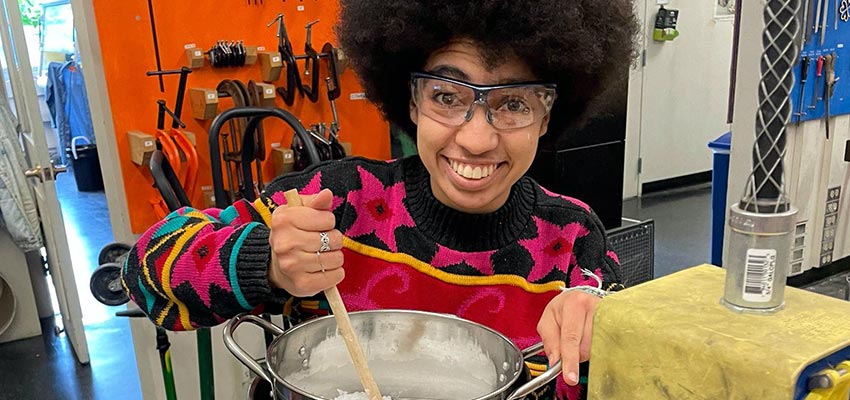
Competitive analysis
Other companies have already made attempts at solving this problem with different solutions. For example, the Antenna Foundation and African Solar Generation developed the “Clever Chicken Project,” which consisted of building the “Solar Box”. This thermally-insulated wood cabinet is connected to solar panels, which collects solar energy and stores the energy in a battery, so that the box can be heated during day and night. The Solar Box demonstrated a 12% decrease in the chick mortality rate.
The traditional solution is using a supervised fire throughout the night. This solution costs farmers about $17 dollars per month in fire wood. However, this constant supervision is unideal for the user and the temperature gradient created by the fire can be hard to control to within the desired temperature range.
Solution
The current D-Lab brooder box uses paraffin wax as a phase change material for heat the box overnight. The PCM is stored in sealed plastic trays and heated in boiling water until it completely melts. The trays are placed beneath the floor of the brooder allowing heat to travel from beneath chicks feet upwards. Ventilation is created with a small fan placed at the top of the box which forces air to flow through the box to a hole on the opposite side.
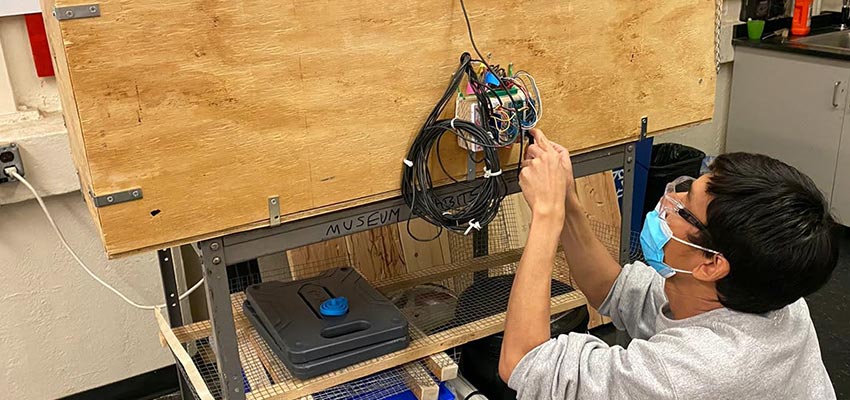
Next steps
Though our team was able to create the desired temperature range for chicks for over eight hours with paraffin wax sourced from McMaster-Carr, it would be worthwhile for future groups to test other more generic waxes that could be purchased in Cameroon. Additionally, the powering of the fan for ventilation is currently done by a variable power supply in the lab. An improved solution would have an alternate power source that is more accessible to those in remote areas. Next steps also involve testing the environment with actual chicks and seeing how they behave with this type of heating underfoot.
MIT D-Lab class
Introduction to Energy in Global Development
Student team
MIT students unless otherwise noted.
- Zeina Barghouti, '23, G Mechanical Engineering
- Ambre Decilap, '23, Mechanical Engineering
- Emily Satterfield, '22, Mechanical Engineering
- Tomohito Okuda, MBA & MPA/ID 2022 (Sloan/HKS)
- Li Xuan Tan, '25, Mathematics
Community partners
African Solar Generation (ASG)
Antenna Foundation
Contact
Eric Verploegen, MIT D-Lab Research Engineer; Instructor, Introduction to Energy in Global Development


